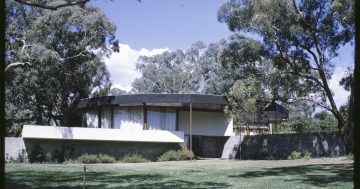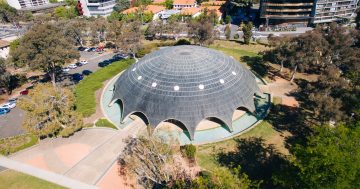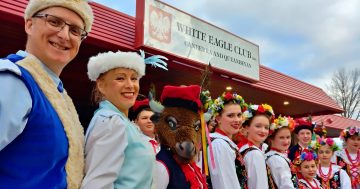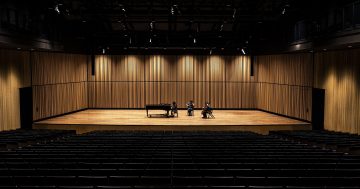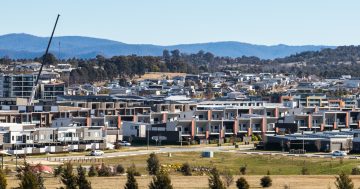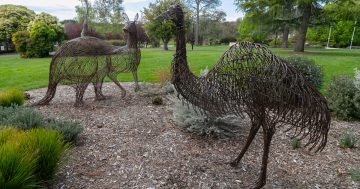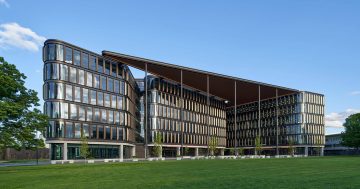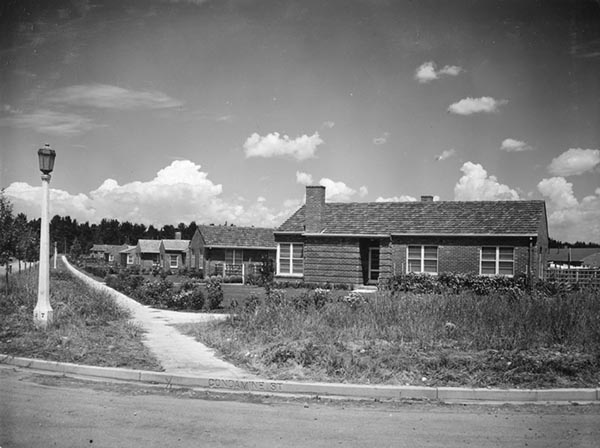
Government houses on the corner of Forbes and Condamine Streets, Turner, in 1951. Photo: Libraries ACT Heritage Library (009242).
There was a time in Canberra when there was a shortage of houses and even the bricks to build them. A time too when it was most unusual to build your own house and special permits were needed to do so. At that time, the government provided the majority of Canberra’s houses.
Canberra’s development had stalled during World War II, but in Prime Minister Robert Menzies’ second term (1949–66), the development of Canberra took off with renewed vigour.
Prime Minister Menzies set up the National Capital Development Commission (NCDC) and committed to move beyond the “good sheep paddock ruined” criticisms and “build up Canberra as a capital in the eyes and minds of the Australian people”.
However, accommodation was a real issue.
READ ALSO: Landlords’ grateful’ to be able to help another family through HomeGround’s affordable housing program
The NCDC sprang into action building infrastructure in the 1950s and 60s. Several thousand public servants and their families were being transferred from Melbourne, and they needed somewhere to live. Accommodation needs were critical. Shortage of labour and building materials after the war, high costs of these materials, limited access to bank loans and a growing population meant something needed to be done quickly.
Immigration was the answer – of people and houses. Homes came from other locations because they were cheap and quick to construct.
During the war, Mulwala House accommodated workers in an explosives factory in Mulwala on the Murray River in NSW. The building was relocated to Canberra to become a hostel. It was rebuilt on what later became Parkes Way, near the Olympic Pool.
Mulwala accommodated young singles, but it was in an isolated location on the fringe of the city. There was little entertainment; it was “too quiet” for the residents. Bike thefts at Mulwala occurred frequently, perhaps as a means to transport residents to where there was more action in town!
Houses from Tocumwal Air Force Base in NSW were relocated to Ainslie and O’Connor in the late 1940s and early 1950s. Known as the ‘Tocumwals'”, relocation was met with opposition from existing neighbours. They considered these ‘sub-standard’ and felt that the basic fibro and weatherboard constructions would lower their property values. The precinct was eventually heritage listed. Dutch immigrant, Riekle Grand, established Canberra’s first private art gallery in the lounge room of her Macarthur Avenue Tocumwal in 1962. These houses in this iconic precinct are loved by many today.
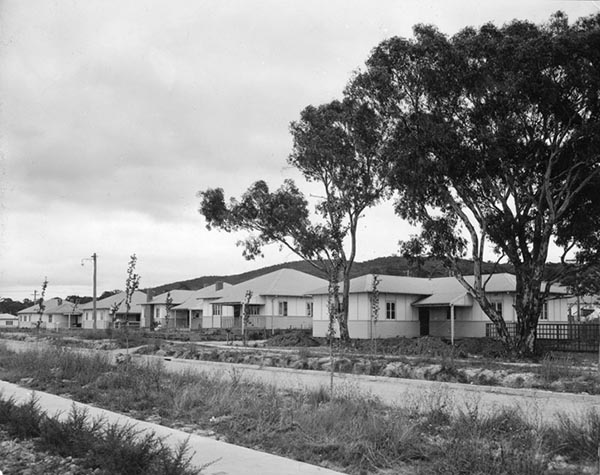
‘Tocumwals’ from Tocumwal Air Force Base in NSW were relocated to Ainslie and O’Connor in the late 1940s and early 1950s. Photo: Libraries ACT Heritage Library (009254).
To help alleviate the labour shortage in the 1950s, 150 German carpenters came on two-year contracts to Canberra to build homes for AV Jennings. These young men built 1850 homes throughout the city. The homes were soon famous for their high-quality workmanship. After their contracts finished, many stayed in Canberra, establishing their own businesses or finding work on the Snowy Mountains Scheme. ‘Jennings Germans’ built friendships and families and added much to the culture of this burgeoning city.
Quick-to-access products were also tried, such as building houses out of pre-manufactured concrete slabs that could be bolted together. Known as ‘monocrete’, 100 houses were built in O’Connor and Turner, with another 45 proposed, with an improved design for Yarralumla. Monocrete houses were known for being cold in winter, and residents had to deal with condensation and mould on the walls.
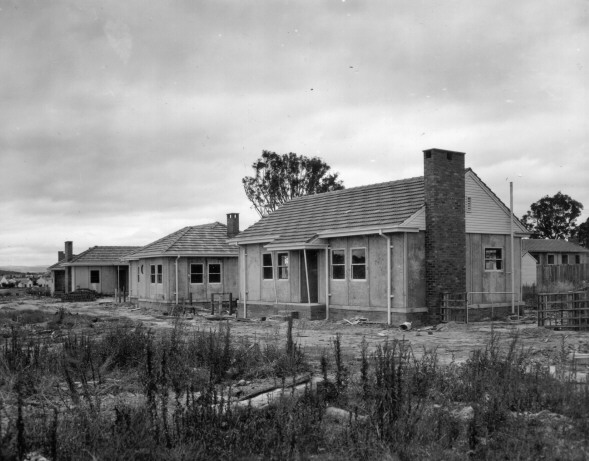
Government housing using monocrete (concrete) as a building material. Faunce Crescent, O’Connor, in 1951. Photo: Libraries ACT Heritage Library (001296).
And if you had the finances to build your own home during the 1950s, you would have to wait about four years to achieve your dream.
First, you needed to present a convincing case to the government to obtain a permit. Then you would have to access building materials that were in short supply. Between 1951 to 1952, only 40 houses were privately built in Canberra as opposed to 635 government-built houses.
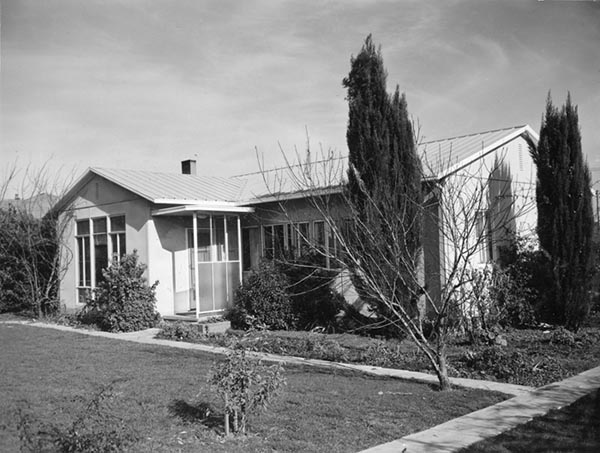
Privately-built house in Cowper Street, Ainslie, in 1951. Photo: Libraries ACT Heritage Library (009273).
It was easier for residents to register their interest for a home and wait their turn. And if you were willing to move into the sticks, such as the new outer suburb of Curtin, you might have been lucky enough to choose from a selection of houses and designs.
Have you lived – or do you still live – in a monocrete or Tocumwal home? Or was it built by Jennings Germans? Share your pictures with The Canberra Page.












